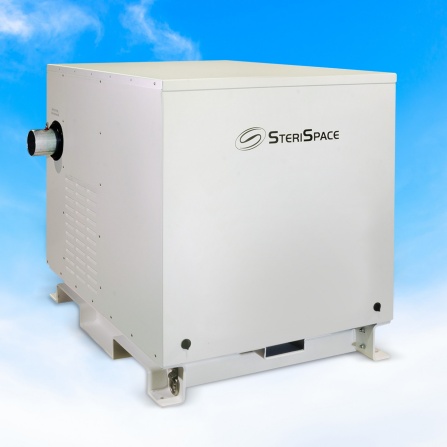YOU FIRST SERVICES
An innovative new standard for air quality
You First Services has developed an air sterilization technology to reduce the transmission of airborne viruses and bacteria to significantly improve indoor air quality. The technology emerged from the University at Buffalo, from modeling systems typically used for spacecraft airflow testing. You First Services and UB have forged a partnership to continue to keep our communities healthy. Besides working together to accelerate R&D, the partnership facilitates key discoveries and learnings around manufacturing, distribution methods, compliance and global outreach.

How You First Services collaborates with UB
CHALLENGE & OPPORTUNITY
Shared air is the problem, not shared surfaces
Respiratory droplets and aerosols laden with bacteria and viruses, such as COVID-19 and influenza, can spread rapidly with varying velocities. Smaller diameter droplets linger in the air for a prolonged period, thus increasing the risk of infecting people occupying a shared space. Larger droplets deposit on surfaces, increasing the risk of infection through direct contact. Controlling a room's airflow with appropriate ventilation and adequate air treatment can minimize the spread of disease.
The emergence of new COVID-19 variants has shown us that despite indoor mask mandates and the availability of powerful vaccines, we are still dangerously vulnerable to the transmission of indoor airborne infections.


SOLUTION & OUTCOME
Breakthrough technology protects against airborne threats
You First Services developed a system called SteriSpace®, the only true air sterilization technology on the market with the ability to destroy 99.9999% of airborne threats. SteriSpace improves indoor air quality by eliminating harmful airborne biological contaminants and sterilizing the air in a single pass. SteriSpace can act as a standalone system or be integrated with a building air handling system to mitigate ventilation-associated outbreaks. Controlling a room's airflow with appropriate ventilation and adequate air treatment can minimize the spread of disease.
With the combination of a dedicated ventiliation equipped with SteriSpace to eliminate airborne pathogens for indoor settings, true infection containment is finally possible.
Supercomputer simulations speed up complex research
You First Services licenses the technology behind SteriSpace from UB. The company has also received funding to collaborate with university research experts, who used computational fluid dynamics—some of the most computationally intensive problems to solve—to simulate clinical scenarios that represented what would happen if an infected patient sneezed or coughed and how the ventilation system removed contaminated air from a room. UB’s high-performance computing resources helped researchers solve the problem faster by allowing them to add a great number of variables to the equation using complex modules, such as droplets' size, direction of airflow and droplet velocity, and simulate how various scenarios like alternate room configurations or plexiglass barriers might affect results. Ultimately, the work helped You First Services determine where to install the SteriSpace system to address the greatest threat for airborne biological contamination.













